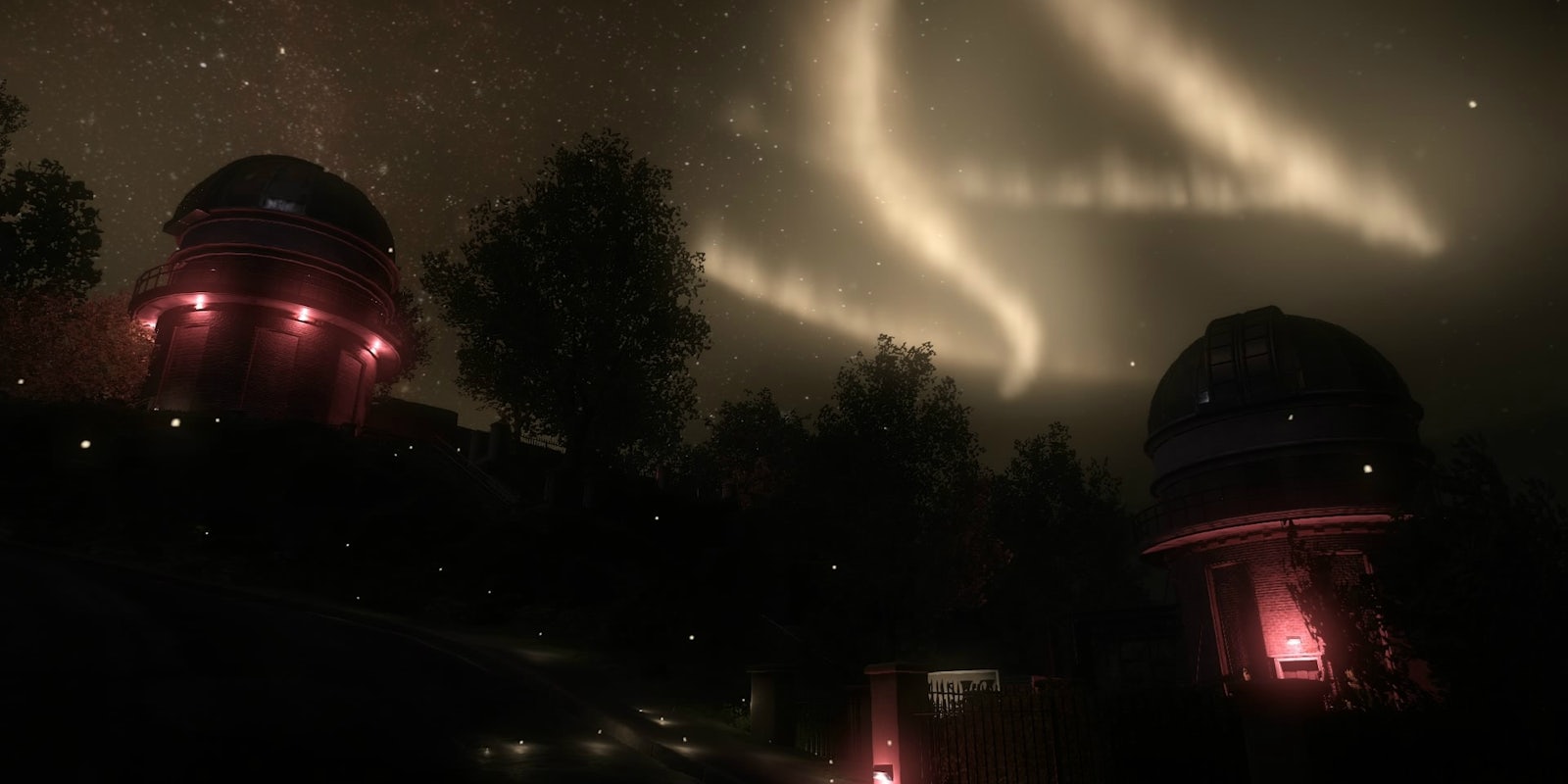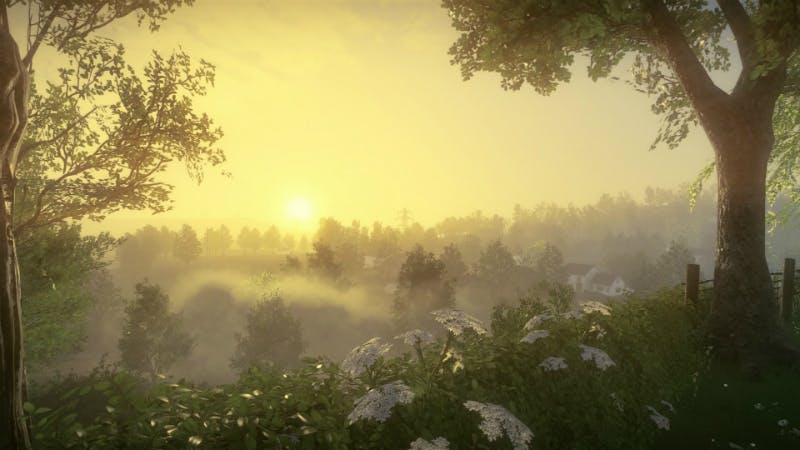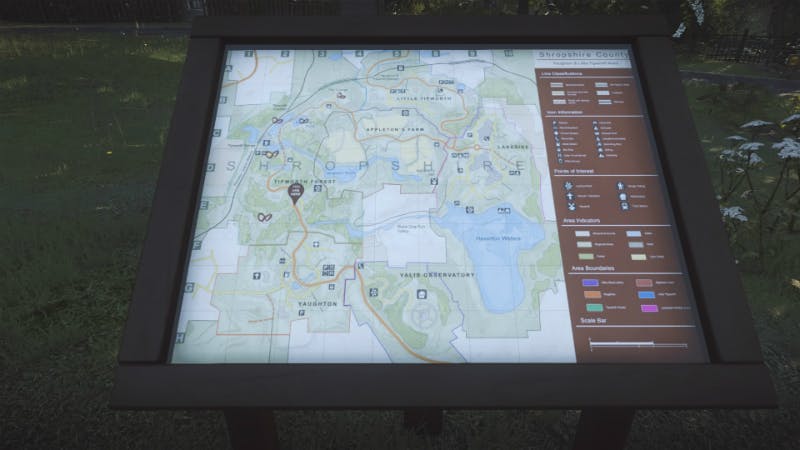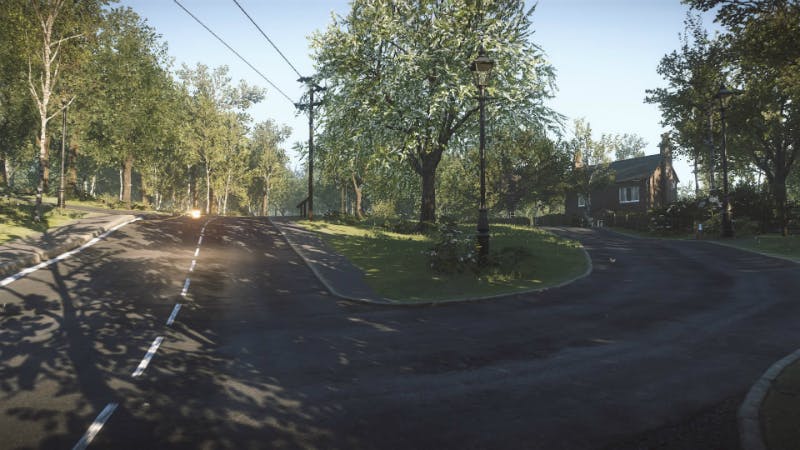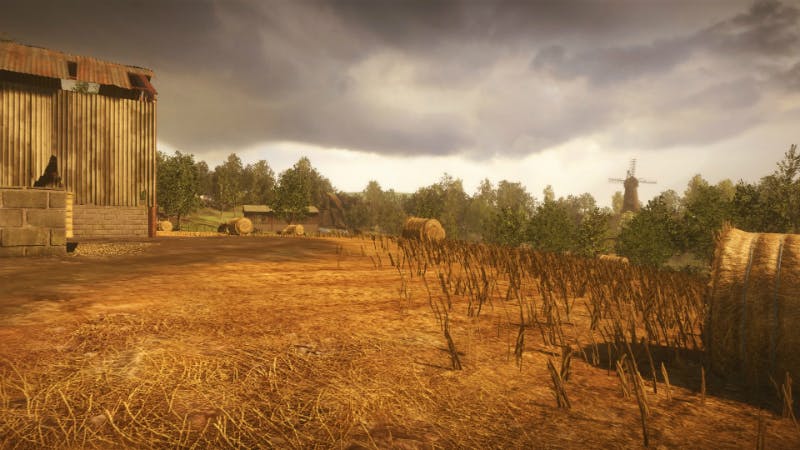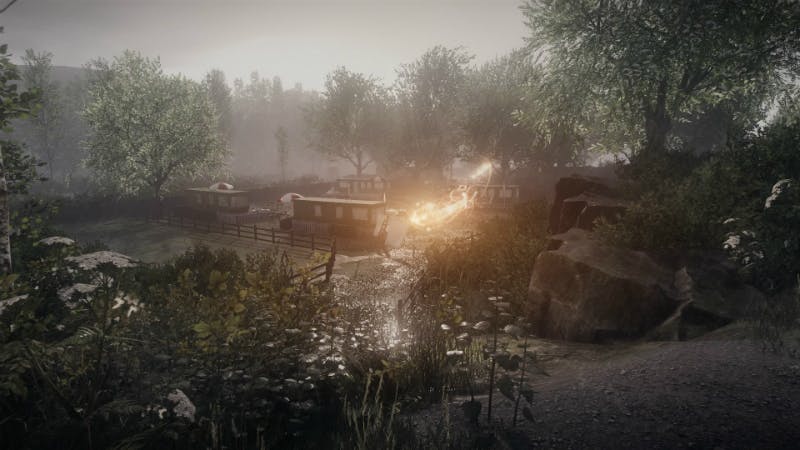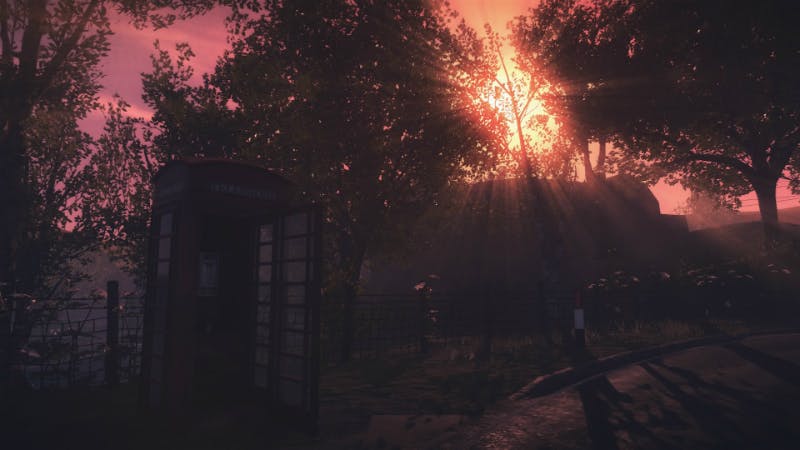If you own a PlayStation 4 and haven’t played Everybody’s Gone to the Rapture, you are missing out on one of the best reasons to own the console.
Everybody’s Gone to the Rapture is the story of the county of Shropshire in the rolling, green hills of England, and the disappearance of every human being that lived there. The CryENGINE-based graphics are gorgeous. The sound design is masterful. The orchestral score that features the Metro Voices and London Voices choirs is wonderfully composed.
On a purely technical level, Everybody’s Gone to the Rapture is a superlative performance from co-developers The Chinese Room and Sony Santa Monica that demonstrates the visual and aural wonder of modern games running on powerful hardware.
Sony Santa Monica was also the co-developer of Journey, a game that helped define what video games as a medium are capable of emotionally. While Everybody’s Gone to the Rapture doesn’t have nearly the same punch as Journey, it still belongs in the same set, and that’s some of the highest praise that anyone can heap on a video game.
You begin Everybody’s Gone to the Rapture with a short credit sequence set over an idyllic drawing of the fields of Shropshire. It transitions to a gorgeous, matching overlook, as if you were looking at a painting on a canvas for a moment and then at the real-life scene the painter was attempting to replicate.
It took me a few seconds to realize the game had begun. The seamlessness of this transition in retrospect speaks volumes about the way Everybody’s Gone to the Rapture opens a portal for you into another world.
You are standing at the gates of the Valis Observatory, with a radio in a nearby guardhouse tonelessly reciting sequences of numbers. When you turn the radio on, a voice tells you that her signal will carry across the valley, and that “the event” has left markers you can use to find what you’re looking for. The answers are all there, in the light.
When you approach a floating point of light outside of a nearby power generator, Everybody’s Gone to the Rapture will prompt you to tilt the control pad back and forth. The point of light will slide from side to side and then erupt into an echo in time, a memory of a scene from the past acted out by glowing silhouettes that are ghosts of the men and women whose echoes you’re witnessing.
You are only prompted a few times on how to interact with objects, or how to open up these echoes in time, and from there on out there are zero UI elements in Everybody’s Gone to the Rapture. It feels like Myst, in that regard. You will discover tourist guides placed alongside roads or posted at scenic vistas that provide just enough guidance to make sure you don’t lose your way or fail to realize where else you might explore.
The nearby, picturesque town of Yaughton is empty. Everybody’s Gone to the Rapture is your journey to discover who they were, and where they went by reading clues in the environment and witnessing the echoes in time.
You’re not precisely alone. A mote of golden light surrounded by swirls of glowing energy is usually hovering nearby, or floating through the area. The mote will point you in the direction of some of the echoes you may unlock. These are the key points in the story. Other echoes will start automatically when you walk past.
You will hear telephones ringing, and you’ll hear the same, toneless recitation of numbers from other radio sets like the one you discovered at the beginning of the game. You have to be close enough to hear either of these, however. Exploration and circumspection are the watchwords in making sure you understand the story and unlock the mystery of Everybody’s Gone to the Rapture to its fullest.
The echoes tell the first half of the story, about the relationships between all the main characters and how the mysterious event you are investigating affected them. The telephone and radio messages tell the second half of the story, about how the mysterious event came to be and who, precisely, was responsible for it.
If the presence of your floating companion, and unlocking echoes from the past don’t make it clear enough that Everybody’s Gone to the Rapture is science-fiction, you will also discover that time is fluid. In one portion of Shropshire country, it is noon. Elsewhere, it is dusk. In yet another location, it is close to nightfall.
Some of the echoes are memories of events at night, and when the memory is concluded, time will correct itself. You can actually see the sun moving across the sky during this process. It is both beautiful, and unnerving, and eventually you come to realize that you are slowly piecing together the events of a single terrifying and beautiful day.
I don’t have many points of reference for explaining what Everybody’s Gone to the Rapture is like to someone who doesn’t play games. I think the best I could do for a pure outsider would be to say that it is like a movie where you, the player, are the director and editor deciding the pace at which you see a thing and how the frame is set, and The Chinese Room and Sony Santa Monica are the writers, sound designers, and cinematographers deciding what you see and hear, and how the artistry of the shot is composed.
When Dear Esther, the previous game released by The Chinese Room that now feels like a rough, conceptual draft for Everybody’s Gone to the Rapture, was released some observers asked whether it constituted a video game at all. Myst, at least, had proper puzzles to solve. Concern over the precise identity of Everybody’s Gone to the Rapture, i.e. whether or not it is actually a game, strikes me as pedantic at best, as does the inevitable question of whether Everybody’s Gone to the Rapture is “fun.”
To even ask the latter question in particular belies a lack of openness to this sort of experience, I think, which in this case would be a particular shame. It kills me that Everybody’s Gone to the Rapture is a PlayStation 4 exclusive. Like Journey or P.T., also PlayStation exclusives, Everybody’s Gone to the Rapture deserves the widest audience possible.
The story in Everybody’s Gone to the Rapture is broken up geographically into “chapters,” with the memory echoes in each portion of Shropshire county focused primarily on a single character.
The first three chapters are painfully slow. If not for the radios and telephones spread throughout the second and third chapters and the information they imparted, I might suggest that chapters two and three could be excised from the story entirely.
The uneven pace is partially for dramatic effect. Everybody’s Gone to the Rapture follows a traditional narrative structure—prologue, rising action, climax, etc.—and because the storytelling involves walking around a sizable environment, it can take a while to get through the early chapters if you want to be thorough.
Patience with the early, slow pace pays off once the major dramatic arcs begin to play out in genuinely moving scenes set by powerful selections from the music score and masterful use of light.
It just takes too long to get to the first of these, and Everybody’s Gone to the Rapture never bothers to explain how to run. The run command, holding the R2 button, was added late to the game after a round of QA feedback. I never would have discovered this if not for breaking my prohibition against reading anything about a game while I was reviewing it and Googling whether or not running was possible, because I was so frustrated with the slow walking speed.
Everybody’s Gone to the Rapture also has a frustrating auto-save feature that kicks in at the end of major narrative reveals. I learned either not to sit down to play the game unless I knew I had enough time available to discover the next auto save point without rushing, or to leave the game running if I had to step away for a bit.
The Chinese Room and Sony Santa Monica were in a tough spot, I think. Finding the balance between free exploration and the need to control the experience to produce specific dramatic moments at specific times cannot be easy, and I think this is precisely the sort of quandary that will make Everybody’s Gone to the Rapture a case study for other developers who similarly want to explore different ways to tell stories in games.
Just as there are two, related halves of the story in Everybody’s Gone to the Rapture, there are two major reveals. The first is something that any science fiction fan should be able to put together quickly, and I was disappointed to discover that my guess was correct. The second reveal, however, at the very end of the game was entirely out of left field and left me dazed—in a good way.
When the story ended, the lingering question I had was: Who is the observer I was supposed to be? Through whose eyes was I seeing? Everybody’s Gone to the Rapture is a story about mass disappearances, so where did I come from? Picking at this question also felt pedantic, especially if it was the only thing I allowed to break the emotional spell of the game’s ending.
I sincerely hope that when Sony’s Project Morpheus virtual reality hardware is released, that Everybody’s Gone to the Rapture is re-released for VR. If I had a chance to do it again, my playthrough of Everybody’s Gone to the Rapture would never have taken place during the day, and I would have had all the lights off so as to provide no distractions.
I also regretted not wearing a pair of stereo headphones rather than using my surround-sound system, as good as it is, because the sound design in Everybody’s Gone to the Rapture is truly masterful. I wish I’d been able to block out any and every sound in earshot that wasn’t coming from the game. Everybody’s Gone to the Rapture could be a centerpiece for Project Morpheus, an entry point into VR for casual users to help them come to grips with how the technology works, and how to understand its potential.
If there’s a movie, or a television show, or a book that I fall in love with and want to share with family and friends, I can usually make that happen, if they’re up to it. I am genuinely sad that the only way I can share the ending and the rest of my experience playing Everybody’s Gone to the Rapture with some of my friends and loved ones is to pack up my PlayStation 4 and lend it out to them.
I don’t really care if my parents or sisters or my non-gamer friends ever play Destiny, as much as I adore Destiny, because not only do I realize how inaccessible the game is to outsiders, I also know they have some idea as to what Destiny is like, after hearing me talk for decades about first-person shooters.
I do care that I can’t share Everybody’s Gone to the Rapture with all of these people because I want them to see what video games are capable of, beyond their current understanding. I think that a game like Everybody’s Gone to the Rapture might actually stand a better chance than my first-person shooters and RPGs of explaining to my loved ones why I am so passionate about gaming. And that is also some of the highest praise I can heap upon a video game.
Every year sees the release of a short list of games that are deemed “important” by critics for raising the bar on one aspect of gaming, or for technical brilliance, or for forcing gamers to ask some pivotal questions about how we understand what defines a video game. Everybody’s Gone to the Rapture may strike all of those chords when awards are being handed out next year.
Disclosure: Our review copy of Everybody’s Gone to the Rapture was provided courtesy of Sony Computer Entertainment America.
Screengrab via Everybody’s Gone to the Rapture
